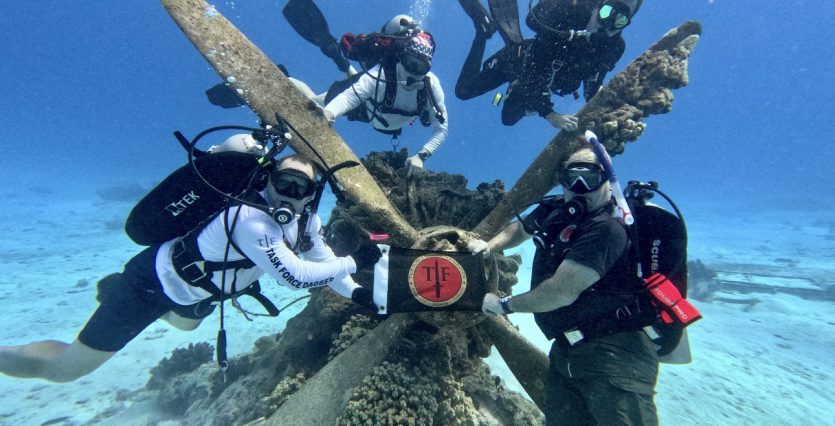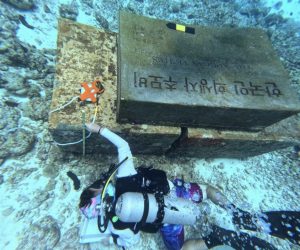Task Force Dagger Special Operations Foundation (TFDSOF) recently traveled to Saipan, CNMI, with the Florida Public Archaeology Network, West Florida University, Ships of Discovery, and East Carolina University to collaborate on citizen science and archaeology research projects on WWII ship and plane wrecks. A photogrammetry team from Kyushu University, Japan, also joined us to build 3D digital models of wreck sites for historical preservation. TFDSOF sent wounded, ill, and injured SOF members and certified scuba divers to help the mission.
The trip was the second of two TFDSOF Saipan missions this summer, the first being a search and recovery mission for MIA service members and the second focusing on on-site conservation. It began with a 30-hour trek from Florida and North Carolina to Saipan. After a brief tour of the island’s many bunkers, cliffs, and battlefields attributed to the Battle of Saipan, we received fundamental training for the tasks we were to undertake. On day one, biofilm sample collection, scientific documentation of sites and their condition, and photogrammetry were all introduced by experts in their fields. Afterward, daily dives around the Maritime Heritage Trail contributed to the efforts of its founder, Dr. Jennifer McKinnon, an underwater archaeologist with Ships of Discovery and East Carolina University, whose research is based in Saipan.
E-DNA samples helped marine biologists like ECU’s Dr. Erin Field evaluate the marine life at each site, many of which have formed artificial reefs essential to marine biodiversity in Saipan after nearly eighty years. Measurements and mapping of new sites aided in the ongoing search and research of underwater crash sites, some attributed to Japanese and American soldiers still MIA. In shallower waters, volunteers like Angela and George Vera, who became paralyzed from the chest down in the line of duty, conducted underwater citizen science after getting scuba certified with NAUI Worldwide at Dagger Dive, TFDSOF’s annual rehabilitative scuba diving event for wounded, ill, or injured SOF members and families. Other volunteers on our deepwater team conducted exploratory dives to check out potential wrecks detected by Lidar and took ROV images. In two weeks, thousands of photographs and hundreds of hours of collective underwater work contributed to research in many fields, all intending to preserve Saipan’s underwater history for generations to come.
The Maritime Heritage Trail consists of twelve archaeological sites in the lagoon of Saipan, where Japanese and American soldiers fought against each other to secure the island. Sunken planes, ships, and tanks litter the lagoon. Some are in near-perfect condition, like the two American tanks within swimming distance off Susupe Beach, while others are shredded and scattered for hundreds of meters on the seafloor after catastrophic impact. Aside from being incredible examples of underwater conflict archaeology, the sites are places where our brothers-in-arms took their last breaths. As we dove to preserve the history of these soldiers’ final moments in battle, Task Force Dagger’s wounded, ill, and injured SOF volunteers felt an extra sense of pride, reverence, and honor in the work being done on Saipan.
To learn more about Task Force Dagger Special Operations Foundation and its mission, visit www.Taskforcedagger.org.




